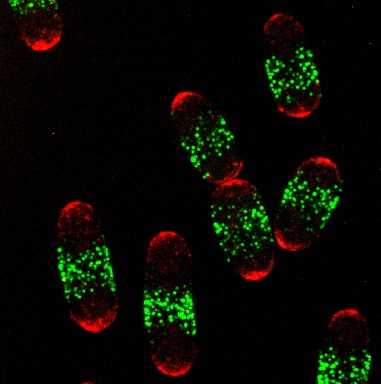The Chang Lab
Research on Cell Growth, Shape and Size
Welcome to Fred Chang's laboratory at UCSF
The Chang Lab studies fundamental questions in cell biology concerning spatial organization of cells. An aspiration of modern cell biology is to understand how the various cellular components assemble into a cell. How does a single cell develop? How does life processes occur inside the cell? How do cells form with a specific shape and size? How do cells grow and divide? How might cells somehow sense cell size, cell shape, and do geometry?
We seek to elucidate quantitative biophysical mechanisms underlying the dynamic cellular processes responsible for morphogenesis of the cell. Our approaches are interdisciplinary, combining the expertise and perspectives of cell biologists, geneticists, physicists, and engineers. The lab develops creative experimental approaches to manipulate and image cellular processes in living cells.
Our favorite model organism is the fission yeast Schizosaccharomyces pombe. These cells are ideally suited for quantitative cell biology and genetic approaches. We also study carnivorous fungi that trap and eat nematodes.
Projects include: cytoplasm, cytokinesis, cell growth, biomechanics, sensing and regulation of cell and nuclear size, regulation of microtubule dynamics, and assembly of the cell wall. Many current projects focus on the density and physical properties of the cytoplasm and nucleoplasm. How are the physical properties of the cytoplasm regulated, and how do they impact on cellular processes?



